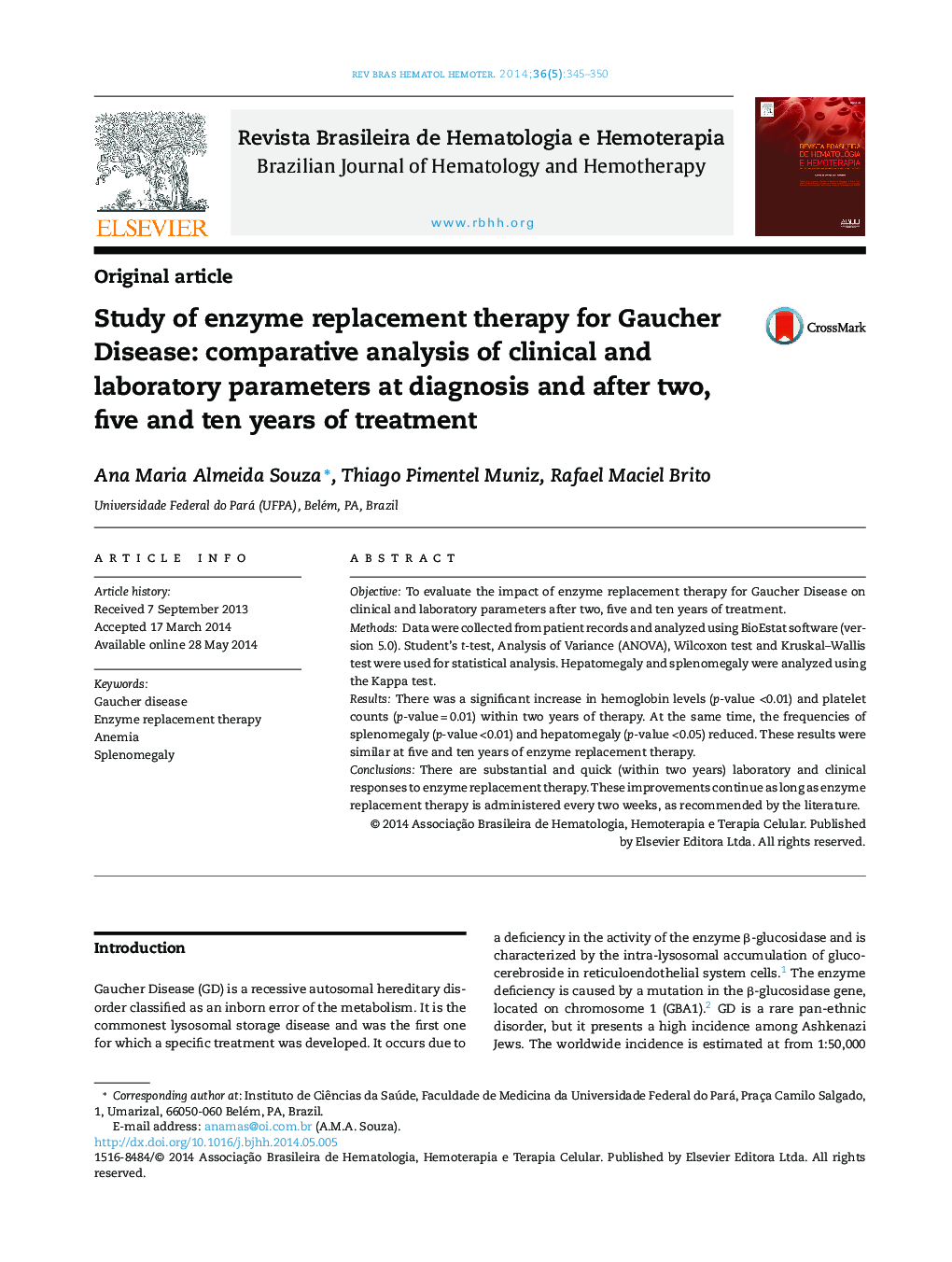| Article ID | Journal | Published Year | Pages | File Type |
|---|---|---|---|---|
| 3333081 | Revista Brasileira de Hematologia e Hemoterapia | 2014 | 6 Pages |
ObjectiveTo evaluate the impact of enzyme replacement therapy for Gaucher Disease on clinical and laboratory parameters after two, five and ten years of treatment.MethodsData were collected from patient records and analyzed using BioEstat software (version 5.0). Student's t-test, Analysis of Variance (ANOVA), Wilcoxon test and Kruskal–Wallis test were used for statistical analysis. Hepatomegaly and splenomegaly were analyzed using the Kappa test.ResultsThere was a significant increase in hemoglobin levels (p-value <0.01) and platelet counts (p-value = 0.01) within two years of therapy. At the same time, the frequencies of splenomegaly (p-value <0.01) and hepatomegaly (p-value <0.05) reduced. These results were similar at five and ten years of enzyme replacement therapy.ConclusionsThere are substantial and quick (within two years) laboratory and clinical responses to enzyme replacement therapy. These improvements continue as long as enzyme replacement therapy is administered every two weeks, as recommended by the literature.
